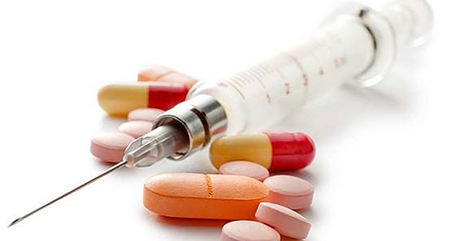Illegal Drugs and EMS Impact- Staying Afloat
An Epidemic
The Washington Post devoted an entire byline story in 2015 to one Pennsylvania County; The heroin epidemic’s toll: One county, 70 minutes, eight overdoses
(The Washington Post, Bernstein, August 23, 2015)
 By the time that day had ended, 16 overdose calls were dispatched to local emergency medical services adding to a total of 25 such incidents over a two-day period.
By the time that day had ended, 16 overdose calls were dispatched to local emergency medical services adding to a total of 25 such incidents over a two-day period.
To say that EMS is challenged by the illegal drug epidemic is an understatement.
As the economy lies stagnant in many parts of the United States, we’re increasingly called to save the lives of people who miscalculate just how much of the “stuff” they can handle in their never-ending quest for a higher high.
Rising Costs
Naloxone (narcan) is flying out of our drug bags faster than we can stock it and the dollars keep ticking without equal compensation flowing back to offset the increased costs.
While in any other industry an increase in business is a good sign, for EMS that’s not always the case. This kind of increase in call volume, because of the desperate nature of these patients who fall victim to the addiction and zap their life’s resources, rarely brings a corresponding reimbursement level to cover the costs.
EMS staff must increase. More trucks on the street to handle the volume spikes only to transport patients who have no resources, no insurance. If these patients have insurance coverage we find it to be dismal medical assistance plans that under-fund EMS costs to provide adequate services by double-digit percentage points.
Local municipalities are strapped to raise taxes in blighted communities where jobs are scarce and hope for the economic light at the end of the tunnel has been snuffed a long time ago.
What to do?
It’s a bleak picture.
What are we to do?
There are a few steps we can take to try to mitigate the problem in order to keep moving forward.
Obtain Information
When completing these drug-related incidents, be sure to collect as much information as possible about your patient. These patients are transient in nature. Often where they show up is many times not their own residence.
Some of these patients may be homeless. Others wind up living in “communities” of other like individuals, so you may find it difficult to pinpoint their exact residential address.
Do your best to collect as much information as possible.
Network to make this happen.
Often the local law enforcement are very familiar with these individuals and may be able to provide demographic information from past arrest records and common knowledge of the individuals.
Follow-up with the receiving/treating facility. Once the patient is stabilized he/she may remain in the hospital’s care for a period of time during which the patient will most likely be counseled to apply for medical assistance or other pertinent coverage. Any information that will assist your billing office in seeking reimbursement is better than no information.
Educate Your Community
We advise that you regularly check-in with your local town fathers to make them aware of the problem and how these incidents tax your system.
Be prepared to share spikes in run volume. Demonstrate to the public how the impact of the proliferation of illegal drugs impacts every member of the community. Participate in drug awareness education opportunities wherever possible whether it be in the local schools or community awareness events.
Be visible.
This is not your fight to fight alone. Plus, the public needs to understand that while you are handling your fifth, sixth, seventh drug-induced emergency, someone across town may be suffering a life-threatening emergency that you are unable to respond to.
Share the numbers. Track and record the losses such as bad debt write-offs and the amount of charity care that you record on your annual balance sheet each year. It’s helpful for the communities you serve to understand just how expensive EMS is and how these incidents tax your systems.